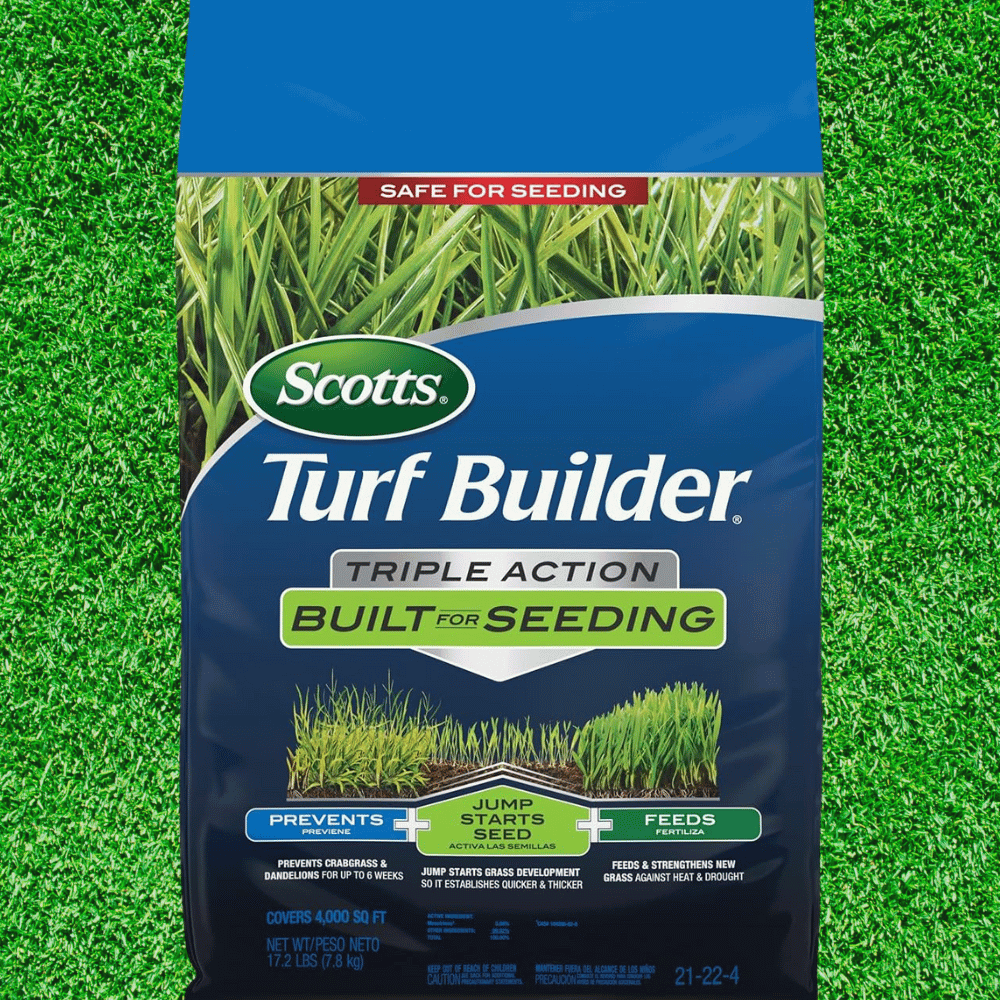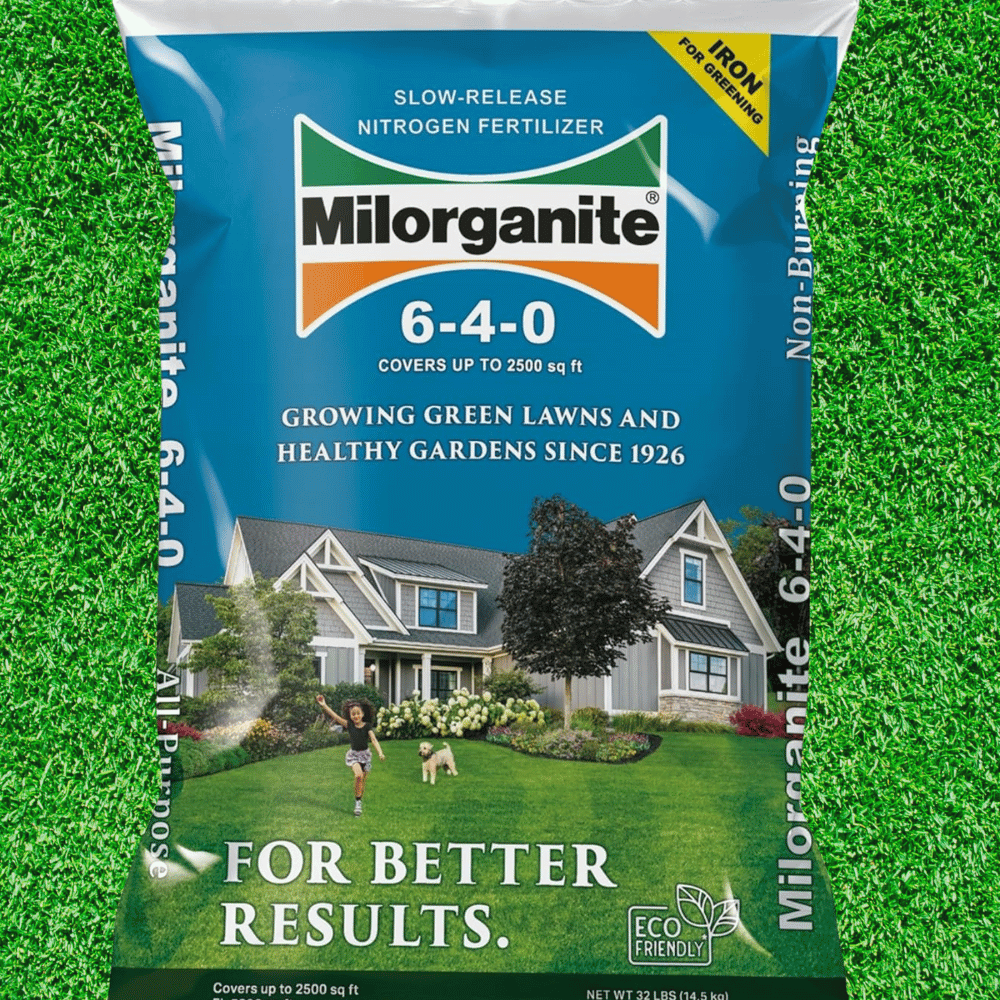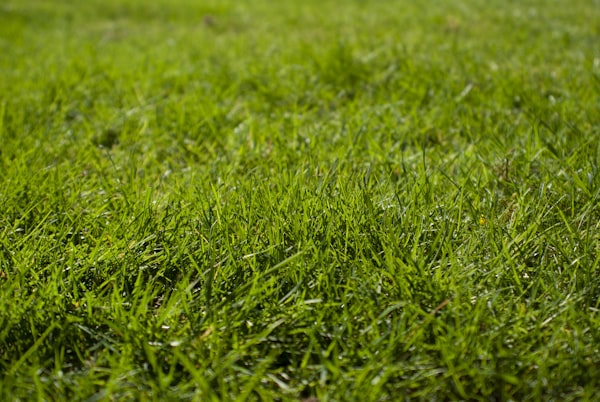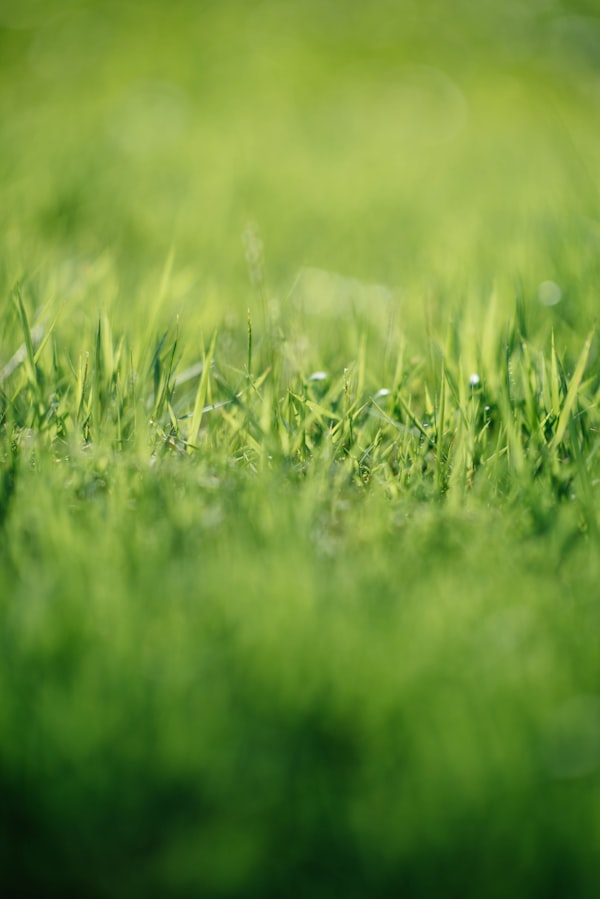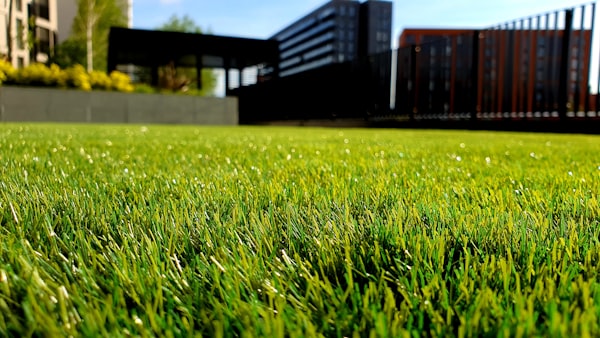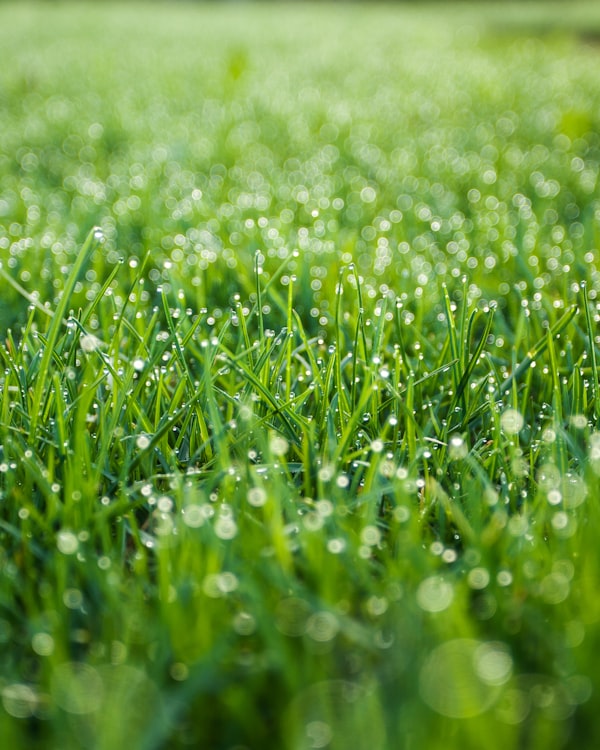The Best Fertilizers for Zoysia Grass
When it comes to finding the best fertilizer for Zoysia grass, it's important to understand the specific needs of this type of grass. Zoysia grass requires a balanced combination of nutrients to promote healthy growth and maintain its beautiful appearance. Let's dive into the world of Zoysia grass fertilization and explore the importance of a balanced 3-1-2 ratio.
Understanding Zoysia Grass Fertilization
Fertilizing Zoysia grass is an essential aspect of lawn care that helps provide the necessary nutrients for its growth and development. The primary nutrients required by Zoysia grass are nitrogen (N), phosphorus (P), and potassium (K). However, the ratio of these nutrients is crucial to ensure optimal results.
According to lawn care experts at Lawn Love, Zoysia grass thrives with a balanced 3-1-2 ratio of N-P-K. This means that for every three parts of nitrogen, there should be one part of phosphorus and two parts of potassium. This balanced ratio helps promote color, density, and root growth in Zoysia grass.
Importance of a Balanced 3-1-2 Ratio
The 3-1-2 ratio of nitrogen, phosphorus, and potassium is considered ideal for Zoysia grass growth. This balanced ratio provides the necessary nutrients in proportions that meet the specific requirements of this grass variety.
A higher nitrogen content is essential for promoting healthy leaf and shoot growth, while phosphorus supports root development and overall plant health. Potassium plays a vital role in maintaining the grass's stress tolerance and disease resistance. Therefore, a fertilizer with a balanced 3-1-2 ratio ensures that Zoysia grass receives the right nutrients in the right amounts.
Here are a few key points to keep in mind when selecting a fertilizer for Zoysia grass:
- Look for fertilizers with a 3-1-2 or 4-1-2 ratio of nitrogen, phosphorus, and potassium, as recommended by The Turfgrass Group. This balanced ratio provides the necessary nutrients for healthy Zoysia grass growth.
- Opt for slow-release nitrogen fertilizers to ensure consistent growth without the risk of excessive nitrogen runoff. Slow-release fertilizers provide a steady supply of nutrients to the grass over time, reducing the chances of nutrient wastage and potential damage to the environment.
- Consider using iron supplements in addition to regular fertilization. Iron helps enhance the green color of Zoysia grass and can be particularly beneficial for maintaining its vibrant appearance.
To explore specific fertilizer recommendations for Zoysia grass, check out our detailed articles on zoysia grass fertilizer recommendations. Remember, finding the right fertilizer and following a proper fertilization schedule is key to maintaining a lush and healthy Zoysia grass lawn.
Recommended Fertilizers for Zoysia Grass
When it comes to finding the best fertilizer for your beloved Zoysia grass, we've got you covered. Here are three top-rated fertilizers that are highly recommended for promoting the growth and health of Zoysia grass:
Scotts Turf Builder Lawn Food
One of the top choices for fertilizing Zoysia grass is the Scotts Turf Builder Lawn Food. This fertilizer is well-known for its effectiveness in promoting deep green grass and strengthening the roots of your Zoysia lawn. The Scotts Turf Builder Lawn Food features a dual-action feeding formula that provides both immediate greening and long-term vitality.
For optimal results, it is best to apply Scotts Turf Builder Lawn Food during the active growth periods in spring and summer. This allows your Zoysia grass to benefit from the nutrients and maintain its lush appearance throughout the growing season. To learn more about the best time to fertilize Zoysia grass, check out our article on best time to fertilize Zoysia grass.
Milorganite Organic Nitrogen Fertilizer
If you prefer an organic option for fertilizing your Zoysia grass, Milorganite Organic Nitrogen Fertilizer is an excellent choice. This fertilizer is made from recycled organic materials, making it an environmentally-friendly option for your lawn. Milorganite provides a slow-release formula that feeds your Zoysia grass over an extended period, promoting both immediate greening and long-term vitality.
By using Milorganite Organic Nitrogen Fertilizer, you can ensure that your Zoysia grass receives the essential nutrients it needs to thrive. This organic fertilizer is safe for children, pets, and the environment, making it a popular choice for homeowners who prioritize sustainability. For more information on organic fertilizers for Zoysia grass, take a look at our in-depth guide on organic fertilizers for Zoysia grass.
Espoma Organic All Season Lawn Food
Another highly recommended fertilizer for Zoysia grass is the Espoma Organic All Season Lawn Food. This organic fertilizer is designed to provide your Zoysia lawn with the essential nutrients it needs throughout the year. With a balanced formula, the Espoma Organic All Season Lawn Food ensures that your Zoysia grass receives the right amount of nitrogen, phosphorus, and potassium – the key nutrients for healthy growth.
By using Espoma Organic All Season Lawn Food, you can maintain the vibrancy and health of your Zoysia grass regardless of the season. This fertilizer is easy to apply and is safe for your lawn, family, and pets. With the Espoma Organic All Season Lawn Food, you can enjoy a lush and green Zoysia lawn year-round.
These three fertilizers – Scotts Turf Builder Lawn Food, Milorganite Organic Nitrogen Fertilizer, and Espoma Organic All Season Lawn Food – have consistently proven their effectiveness in promoting the growth and health of Zoysia grass. By choosing the right fertilizer for your Zoysia lawn, you can ensure that it remains green, healthy, and ready to make your neighbors green with envy.
Tips for Fertilizing Zoysia Grass
When it comes to fertilizing zoysia grass, timing is everything. Proper timing ensures that you provide the grass with the nutrients it needs at the right stage of growth. Additionally, using the right type of fertilizer and incorporating iron supplements can further enhance the health and appearance of your zoysia grass.
Timing is Everything
To achieve optimal results, it's crucial to fertilize zoysia grass at the right time. The best time to fertilize zoysia grass is during its active growth periods, which typically occur in the spring and summer. During these periods, zoysia grass is actively taking in nutrients and using them to fuel growth.
By fertilizing during the active growth phases, you provide the grass with the necessary nutrients to promote healthy development and vibrant color. It's important to follow the recommended application rates provided by the manufacturer for the specific fertilizer you're using. For more information on the best time to fertilize zoysia grass, refer to our article on best time to fertilize zoysia grass.
Slow-Release Nitrogen for Consistent Growth
When it comes to choosing a fertilizer for zoysia grass, opt for slow-release nitrogen fertilizers. These fertilizers provide a steady supply of nutrients to the grass over an extended period of time, ensuring consistent growth and vibrant color.
Slow-release fertilizers deliver nutrients gradually, reducing the risk of nutrient leaching and minimizing the chances of excessive growth spurts. This slow and steady release of nitrogen promotes even and controlled growth, allowing you to maintain a well-manicured lawn. Look for fertilizers that specifically mention "slow-release" on the packaging to ensure you're providing your zoysia grass with the best possible care. For fertilizer recommendations, check out our article on zoysia grass fertilizer recommendations.
The Benefits of Iron Supplements
Iron supplements can be beneficial for zoysia grass, as they aid in maintaining its deep green color. Iron is an essential micronutrient that plays a crucial role in chlorophyll production, enhancing the grass's photosynthesis process. This, in turn, results in healthier, greener grass.
If you notice your zoysia grass losing its vibrant color or appearing yellowish, it may be a sign of iron deficiency. Applying iron supplements can help correct this issue, restoring the lush green color of your lawn. Iron supplements are often available in granular or liquid form, and they can be applied directly to the grass according to the manufacturer's instructions.
Remember to always follow the recommended application rates and guidelines when using iron supplements or any other fertilizer on your zoysia grass. If you're considering organic options, there are also organic fertilizers for zoysia grass available in the market that can provide the necessary nutrients while minimizing environmental impact.
By considering the timing of fertilization, opting for slow-release nitrogen fertilizers, and incorporating iron supplements, you can ensure that your zoysia grass remains vibrant, healthy, and green throughout the growing season. Don't forget to conduct a soil test to determine any specific nutrient needs and adjust your fertilization practices accordingly. With proper care and attention, your zoysia grass will be green carpet worthy in no time.
Common Problems with Zoysia Grass
Maintaining a healthy and vibrant zoysia grass lawn requires proper care and attention. However, like any other type of grass, zoysia grass is susceptible to certain problems. In this section, we will explore some common issues that can arise with zoysia grass and discuss preventive measures and maintenance practices to keep your grass looking its best.
Fungal Diseases and How to Prevent Them
Zoysia grass can be vulnerable to fungal diseases, such as "large patch," which appears as large patches of brown grass or bright orange areas. These diseases are more likely to occur during periods of slower grass growth in spring or fall due to cooler temperatures, heavy rainfall, or floods (ABC Home & Commercial Services). To prevent fungal diseases, it's important to follow good cultural practices, such as:
- Avoid overwatering and ensure proper drainage to prevent waterlogged conditions that can promote fungal growth.
- Maintain proper mowing height and frequency to promote good air circulation and minimize moisture retention on the grass blades.
- Apply fungicides as a preventive measure when conditions are favorable for disease development.
Pest Damage and Control Measures
Pests can also cause damage to zoysia grass. Chinch bugs and hunting billbugs are common culprits that can result in large brown areas or signs that mimic drought damage. Other animals like moles, mice, gophers, and rabbits can also cause damage to zoysia grass, requiring the assistance of rodent or wildlife control specialists (ABC Home & Commercial Services). To mitigate pest damage:
- Regularly monitor your lawn for signs of pest infestations, such as discolored or damaged grass patches.
- Use appropriate insecticides or natural remedies to control pests, taking care to follow the instructions provided.
- Maintain a healthy lawn through proper fertilization, watering, and mowing practices to minimize the risk of pest infestations.
Proper Maintenance Practices for Healthy Grass
Adhering to proper maintenance practices is essential for the overall health and appearance of zoysia grass. Improper care can lead to issues such as root rot, nutrient deficiencies, yellow spots, and increased vulnerability to pests and diseases (ABC Home & Commercial Services). Some maintenance tips for healthy zoysia grass include:
- Follow a regular watering schedule to ensure proper hydration without overwatering or underwatering.
- Mow your zoysia grass at the recommended height to encourage healthy growth and prevent scalping or stress.
- Avoid excessive fertilization, as it can lead to nutrient imbalances and damage to the grass.
- Use a sharp mower blade to achieve clean cuts and minimize stress on the grass.
Remember, zoysia grass may not thrive well in heavily shaded areas but can tolerate light or occasional shade. If you're facing challenges related to shade, drought, or heat stress, consider seeking guidance from lawn professionals who can provide tailored advice and recommendations specific to your lawn's needs (ABC Home & Commercial Services).
By being proactive in preventing fungal diseases, addressing pest issues promptly, and following proper maintenance practices, you can help ensure the health and vitality of your zoysia grass lawn. Regular observation and care will go a long way in maintaining a beautiful and resilient lawn.
The Importance of Soil Testing
When it comes to nurturing a lush and healthy zoysia grass lawn, soil testing plays a crucial role. It helps determine the specific nutrient needs and pH levels of the soil, allowing us to tailor our fertilization approach for optimal growth and health. As they say, "know thy soil, know thy grass!"
Determining Nutrient Needs
Soil testing before applying fertilizers to zoysia grass is highly recommended. It provides valuable insights into the nutrient deficiencies present in the soil, enabling us to address them effectively. By identifying which nutrients are lacking, we can select the appropriate fertilizers that will provide the specific elements our zoysia grass needs to flourish.
To conduct a soil test, you can typically collect a sample from your lawn and send it to a reputable soil testing laboratory. They will analyze the sample and provide you with a detailed report, outlining the nutrient levels and any imbalances detected. Armed with this information, you can make informed decisions regarding the type and quantity of fertilizers to apply.
pH Levels and Soil Amendments
Another critical aspect of soil testing is determining the pH level of the soil. pH is a measure of how acidic or alkaline the soil is, and it plays a significant role in nutrient availability to plants. Zoysia grass thrives in slightly acidic to neutral soil, with a pH range of 6.0 to 7.0. If the pH deviates too much from this range, it can impact the grass's ability to absorb nutrients effectively.
Based on the soil test results, you may need to make soil amendments to adjust the pH level. For example, if the soil is too acidic, you can add lime to raise the pH. On the other hand, if the soil is too alkaline, sulfur or other acidifying agents can help lower the pH. By optimizing the pH level, you create a more favorable environment for the zoysia grass to access and utilize the nutrients present in the soil.
Soil testing is a valuable tool in our quest for a green carpet-worthy zoysia grass lawn. It allows us to tailor our fertilization approach to address specific nutrient deficiencies and optimize the pH level of the soil. With this knowledge in hand, we can confidently select the best fertilizers for our zoysia grass and provide the nutrients it needs to thrive. For more information on fertilizer recommendations, check out our article on best fertilizer for zoysia grass.
Remember, by understanding our soil, we can unlock the secrets to a vibrant and healthy zoysia grass lawn. So let's dig in and give our grass the nourishment it deserves!
Fertilization Dos and Don'ts for Zoysia Grass
When it comes to fertilizing your Zoysia grass, there are a few important dos and don'ts to keep in mind. Proper fertilization practices can help maintain a healthy and vibrant lawn, while avoiding common pitfalls. Let's explore these guidelines to ensure your Zoysia grass stays green and lush.
Avoiding Excessive Fertilization
One of the most crucial dos for fertilizing Zoysia grass is to avoid excessive fertilization. While it may be tempting to apply more fertilizer in hopes of achieving faster growth, it can actually cause more harm than good. Excessive fertilization can lead to thatch build-up, pest problems, and diseases. It's essential to follow recommended fertilization schedules and quantities to maintain a healthy Zoysia grass lawn. Remember, moderation is key!
Incorporating Organic Fertilizers
Incorporating organic fertilizers into your fertilization routine can provide numerous benefits for your Zoysia grass. Organic fertilizers enriched with humic acid can improve nutrient uptake and enhance soil structure. These fertilizers create a sustainable and healthy environment for your grass to thrive. By choosing organic options, you not only nourish your lawn but also contribute to a more environmentally friendly approach to lawn care. Consider using organic fertilizers for Zoysia grass for a greener and healthier lawn.
Slow-Release Options for Steady Growth
For Zoysia grass, slow-release fertilizers are highly recommended. These fertilizers provide a steady supply of nutrients over time, promoting steady and uniform growth. Slow-release options are ideal for Zoysia grass as they help avoid excessive flushes of growth and potential nitrogen imbalances. Look for fertilizers with a nitrogen-phosphorus-potassium ratio of approximately 3-1-2, which is considered suitable for Zoysia grass. This balanced ratio ensures that your grass receives the necessary nutrients without overwhelming it. By opting for slow-release fertilizers, you can achieve a lush Zoysia grass lawn without the risk of overfeeding.
By following these dos and don'ts of fertilization, you can maintain a healthy and beautiful Zoysia grass lawn. Remember to avoid excessive fertilization, incorporate organic fertilizers, and opt for slow-release options. These practices will help you achieve the best results while ensuring the long-term health and vitality of your Zoysia grass. For more information on the best fertilizers for Zoysia grass, check out our article on best fertilizer for Zoysia grass.
Establishing and Maintaining a Zoysia Grass Lawn
To have a lush and healthy zoysia grass lawn, proper soil preparation, regular fertilization, and appropriate watering practices are vital. Let's dive into the key aspects of establishing and maintaining a beautiful zoysia grass lawn.
Soil Preparation and Establishment Methods
Before establishing a zoysia grass lawn, it's important to prepare the soil properly. While complete tilling may not always be necessary, grading and soil amendments should be considered as needed. There are different methods of establishment to choose from, including sodding, plugging, and sprigging. Sodding is the fastest but most expensive option, while plugging and sprigging are less expensive alternatives (University of Missouri).
Fertilization Schedule for Optimal Growth
Established zoysia grass requires less fertilizer compared to many other grass species. A seasonal total of 2 pounds of nitrogen per 1,000 square feet is typically sufficient. Fertilization should be done from May through August, and it's recommended to conduct a soil test before applying fertilizers to determine the specific nutrient needs of your lawn. This helps avoid over-application or under-application of fertilizers, contributing to the overall health of the grass (University of Missouri). For specific fertilizer recommendations, you can refer to our article on zoysia grass fertilizer recommendations.
Proper Watering Practices
Watering your zoysia grass lawn adequately after applying fertilizer is crucial. It helps move the nutrients into the soil for root uptake, contributing to a healthy lawn. When watering, it's important to provide deep, infrequent soakings rather than frequent shallow waterings. This encourages deeper root growth and helps the grass become more drought-tolerant. Aim to provide approximately 1 inch of water per week, either from rainfall or irrigation, to maintain optimal growth (Missouri Botanical Garden).
By following proper soil preparation techniques, establishing your zoysia grass lawn through the preferred method, adhering to a well-timed fertilization schedule, and adopting appropriate watering practices, you can ensure the proper growth and maintenance of your zoysia grass lawn. For more tips on zoysia grass care, be sure to check out our article on best practices for zoysia grass care.
Remember, a little extra care and attention go a long way in achieving a beautiful and healthy zoysia grass lawn.
Additional Tips for Zoysia Grass Care
Taking care of your zoysia grass involves more than just choosing the right fertilizer. It's important to consider other factors such as sunlight requirements, selecting the appropriate fertilizer type, and understanding the role of potassium and phosphorus.
Sunlight Requirements and Shade Tolerance
Zoysia grass thrives in sunlight and requires at least six to eight hours of direct sunlight per day to reach its full potential. It grows best in full sun, where it can develop a dense and lush turf. However, zoysia grass can tolerate moderate shade, although the grass in shaded areas may have thinner turf and be less competitive compared to areas with full sun (University of Missouri). If you have areas with shade in your lawn, consider trimming tree branches or bushes to allow more sunlight to reach the grass.
Selecting the Right Fertilizer Type
When choosing a fertilizer for your zoysia grass, it's important to consider the specific needs of this grass variety. Zoysia grass prefers slightly acidic soil with pH levels ranging from 6 to 6.5. However, it can tolerate slightly more alkaline or acidic soils within a 0.4-point range with regular watering and fertilizing. Before applying fertilizer, it's recommended to conduct a soil test to determine the pH level and any specific amendments required, such as sulfur or lime (Bob Vila). This will help ensure that you select the right type of fertilizer that complements the pH level of your soil.
The Role of Potassium and Phosphorus
Potassium and phosphorus are two essential nutrients for zoysia grass. Potassium helps promote root growth, disease resistance, and overall plant health. Phosphorus is important for energy transfer and root development. When selecting a fertilizer for zoysia grass, look for products that contain a balanced ratio of these nutrients, such as the commonly recommended 3-1-2 ratio. A fertilizer with a higher potassium content can help strengthen your zoysia grass and make it more resilient to stressors such as drought, heat, and disease (zoysia grass fertilizer recommendations).
By understanding the sunlight requirements and shade tolerance of zoysia grass, selecting the appropriate fertilizer type, and recognizing the role of potassium and phosphorus, you can ensure that your zoysia grass lawn remains healthy and vibrant. Remember to provide adequate sunlight, choose the right fertilizer for your specific soil conditions, and consider the nutrient needs of your grass. With proper care, your zoysia grass will thrive and create a beautiful green carpet in your yard.


